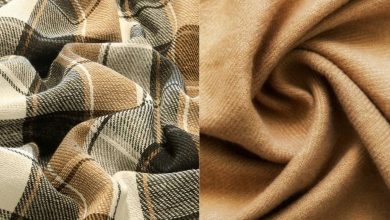Expert Tips to Spot High-Quality Kilt Stitching
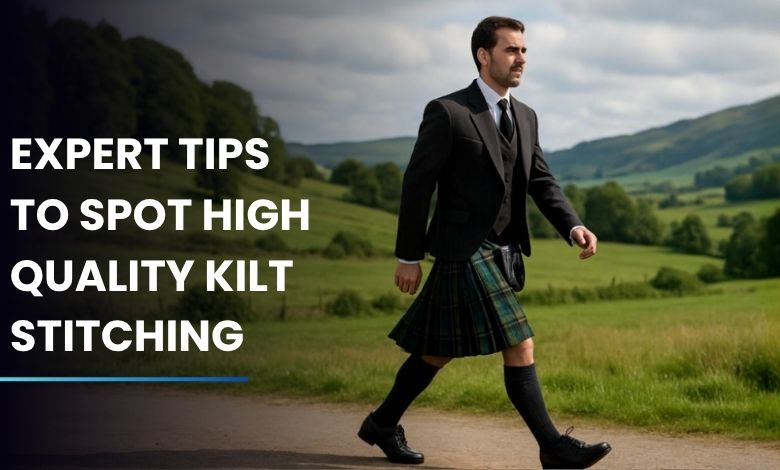
The quality of a fabric in kilts matters a lot regarding their longevity. Conversely, there is something else that is equally important in this case and this is high-quality kilt stitching. An important thing here is to know how to check the quality of stitching when choosing a kilt. Therefore, knowing the signs of low-quality stitching is crucial as well. Awareness of these aspects helps you enjoy the longer lifespan of your attire. So, without delay let us move to the expert tips.
Expert Tips to Spot High-Quality Kilt Stitching
Undoubtedly, high-quality stitching results in the durability, fit, and appearance of a kilt. An excellence in craftsmanship ensures the kilt is going to be durable, pleats remain crisp and shaped. It also prevents your fabric from unraveling and contributes to an accurate fit.
Moreover, the level of stitching is what makes your investment fruitful to a specific degree. That’s why you must act like a pro while checking the quality of stitching. A list of a few tricks is given below for your ease.
Examine the Stitch Consistency
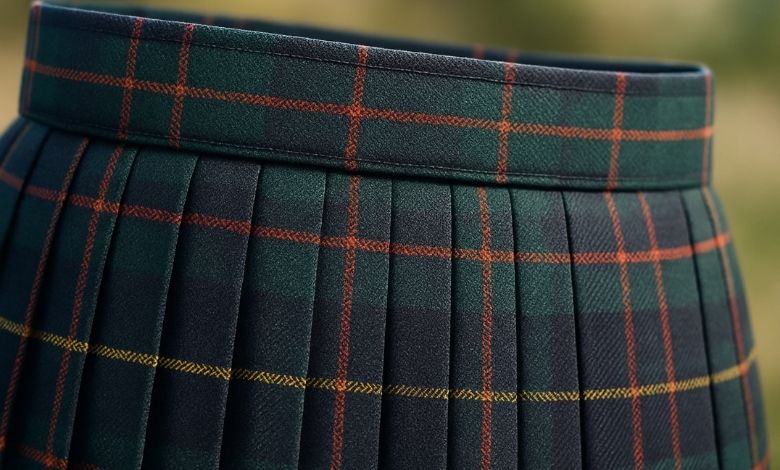
The first thing you must consider while inspecting the cycle of threads sewn in your kilts is to observe its consistency or flow. Deeply focus on the pleat stitching, its hem, and the waistband to figure out the genuine condition of the stitching.
Check stitching on these parts for uniformity, tightness, and consistency. Observe little visible stitching on the front of the kilt to make sure the hem does not gather at the same point. A well-sewn kilt will have tight, uniform pleat stitches, a smooth hem, and a secure and evenly stitched waistline.
Check for Reinforced Stress Points
The next step is to check the forcefully applied stitching of the kilts. The process involves focusing on the area that can have a chance of wear and tear. A gap between random stitches or the thread with loose foundations are a sign of poor craftsmanship. So, you must always be careful and inspect such things carefully.
Look at the Inside Finish

As a kilt wearer, you must know how to look at the inside finish of the kilt. The process is not daunting at all. Just turn it inside out and see how the stitching appears. If your kilt is purely handmade, doubting the quality inside has no meaning because machines cannot compete with human force and expertise. In case your kilt is made with a machine, the inside finish can be questionable.
Inspect Pleat Alignment and Securing
The structure and effectiveness of pleats also say a lot about kilt stitching quality. The flow of threads and placement of pleats reveal the truth of stitching. If the craftsman is an expert, the pleats will provide an equal level of ease while walking. Every step will be comfortable and all the pleats will work uniformly. In case, the pleats hidden behind each other do not have an alignment, it means stitching needs attention.
Use the Tug Test
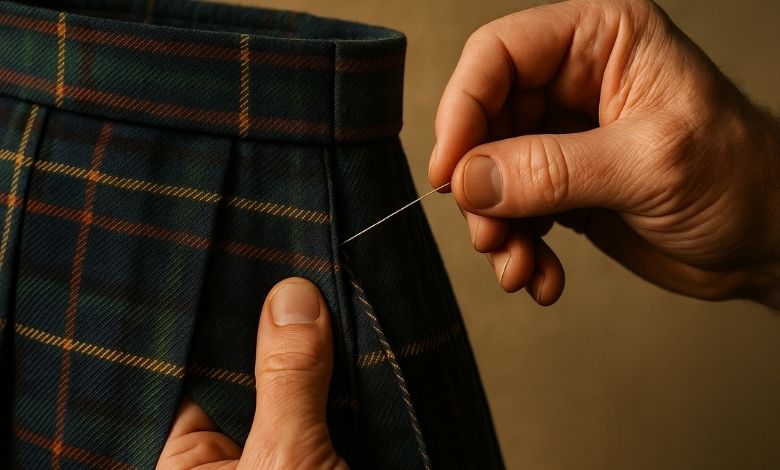
An easy, quick, and manual method “tug test” is also a considerable way to determine if the bobbin tightness on your sewing machine is accurate. To do this, simply give the loose end of the bobbin thread a slight tug. There may be too little tightness if it comes out too readily. You can slightly lose it, if you find the thread feels extremely tight or hardly moves at all.
Key Signs of Low-Quality Stitching
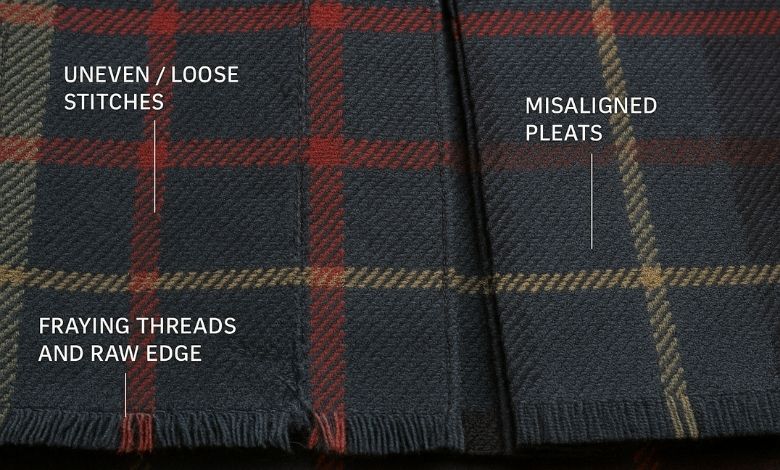
There is something other than checking the quality of stitches which also determines the grip of threads used to sew your kilt. It is to know about the key signs of low-quality stitching. If you find any of the following signs, get it refined first and then wear your kilt.
Uneven or Loose Stitches: Check stitches, if you witness any inconsistent or easily pulled apart, it clearly indicates the sewing lacks strength and precision.
Fraying Threads or Raw Edges: If you find some visible frays or unfinished edges in your kilt, it narrates the careless tailoring which may lead to wear and tear after a little time.
Misaligned Pleats or Gaps: When the pleats of your kilt don’t line up or leave spaces, it reflects poor craftsmanship which undoubtedly affects the kilt’s overall fit.
Tailor Reputation and Craftsmanship Legacy
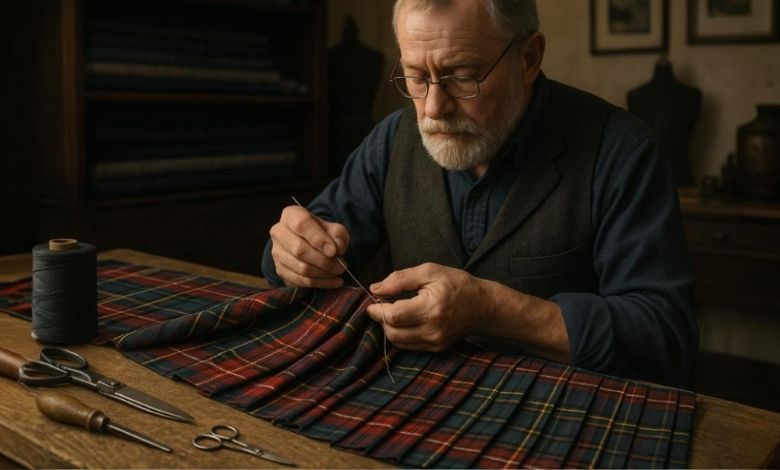
Kilt-makers are the heroes behind the kilts. Initially, kilts were made by hand but now the machines have become popular. However, in countries in Scotland and Ireland where kilts belong, they still make the kilts by hand. The art of making kilts moves from generation to generation and people still prefer wearing hand-made kilts to truly experience the Highlander traditions.
Kilt manufacturers establish their identities by cultural workmanship and carefully hand-stitched apparel. 100% pure wool makes tartan kilts, and one craftsman completes the production process by cutting the material, carefully pleating it, and stitching it. So, the reputation and legacy of craftsmanship completely hides in the kilt’s stitches.
Buy Accurately Stitched Kilts at the TUK Store
Now you must have come to know about the techniques to check the quality of stitching in your kilts. Similarly, you know the key signs of low quality. Therefore, the reputation of craftsmen and brands matters too. So, when buying a new kilt, ensure shopping from brands that offer premium kilts with high-quality stitching. The Utility Kilt Store is an online, customizing and selling high-quality kilts at affordable prices. So, order your long-lasting kilt today!


